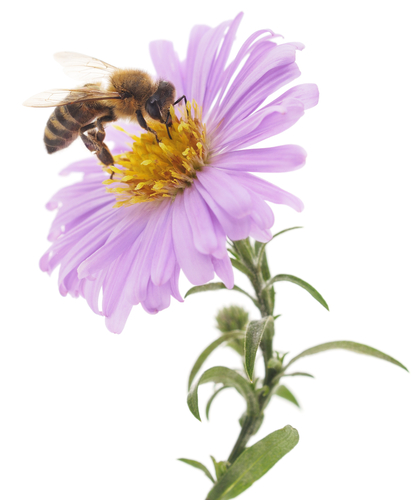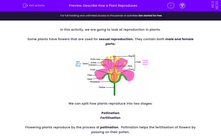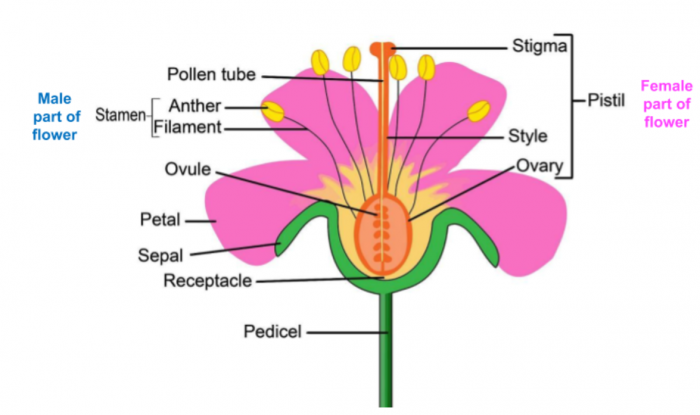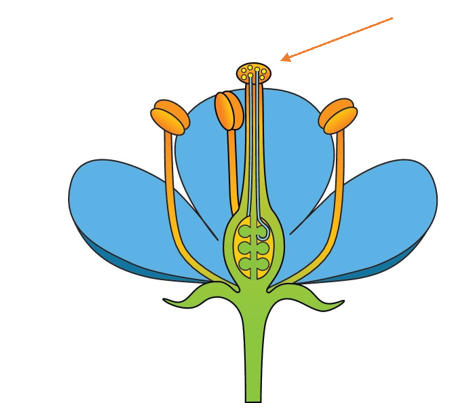In this activity, we are going to look at reproduction in plants.
Some plants have flowers that are used for sexual reproduction. They contain both male and female parts:
We can split how plants reproduce into two stages:
Pollination
Fertilisation
Flowering plants reproduce by the process of pollination. Pollination helps the fertilisation of flowers by passing on their pollen.
Flowering plants consist of the following structures which complete specific functions:
Stamen - the male parts of the flower (each consists of an anther held up on a filament)
Anthers - produce male cells (pollen grains)
Pollen grain - the structure produced in the anthers of a flower that contains the male gamete (sex cell)
Gamete - sex cell (sperm in males and ova/eggs in females)
Stigma - the top of the female part of the flower which receives pollen
Ovary - the female organ of a flower which produces the female sex cells and contains ovules
Ovule - part of the female reproductive tissue in plants, contains the ova
Nectar - a sugary solution produced by flowers to attract pollinating animals
Sepals - when a flower is still a bud its petals are protected by sepals
Petals - surround the reproductive part of a flower and are brightly coloured to attract pollinators
In order for a plant to reproduce, the process of fertilisation must take place. But how does this happen in plants?
The anthers of the stamen produce pollen (these are often referred to as the male parts of the flower).
Each grain of pollen in a flowering plant contains a male gamete (male sex cell).
In order for a flower to reproduce, the male sex cell must come into contact with the female sex cell. This is where pollination comes in!
Pollen can travel between plants in two ways:
1) By insects (insect pollination)

2) By the wind (wind pollination)
The stigma is the top of the female part of the flower, and it's the part that receives the pollen. It's often sticky in order to trap the pollen.
From here, a pollen tube grows through the style to the ovule inside the ovary where it fertilises the ova (egg cells) to make seeds. This process is called fertilisation: the joining of a male and female gamete.
After fertilisation, seeds begin to form in the ovules. The plant has now reproduced successfully!
Are you ready to try some questions?











